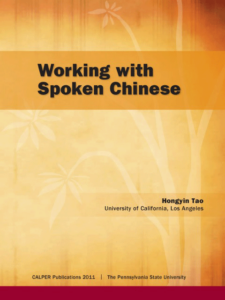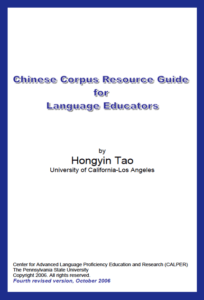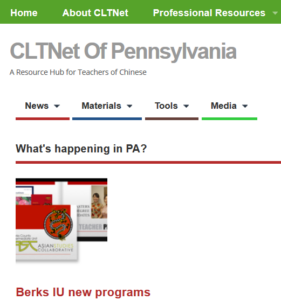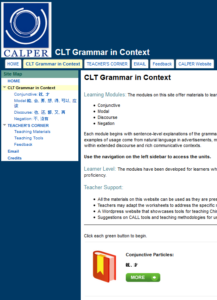CLTNet of PA Resource Hub
This website is intended as a resource hub. Teachers will find i) information relevant to CLT in Pennsylvania, such as news from communities and institutions; ii) references to quality teaching materials; iii) sources for media in Chinese; iv) selected tools for teaching and learning, and more.
Subscribe to a feed and get notifications about new posts directly to your inbox.
Visit the site and join the network of teachers of Chinese in Pennsylvania.
CLT Grammar in Context
Grammar in Context are online materials for high-intermediate, low-advanced and advanced learners of Mandarin Chinese.
Grammar in Context includes Learn—Practice—Self-check and Vocabulary Support for 16 commonly used particles in Mandarin Chinese. The units can be used in blended learning environments, for self-study, and traditional classroom settings.
Speech Acts in Films
Speech Acts in Films is a site where students of Mandarin Chinese learn to examine, understand, and practice social language through the medium of film. The primary audience of the materials are low-advanced and advanced learners who completed approximately two years of language instruction. The materials have been developed for blended-learning environments, but can also be used for self-study, or as supplemental materials in traditional instructional settings.
In the materials on this site, we developed exercises, activities, explanations and worksheet for learners to practice speech acts through the content of four rich and entertaining Chinese films. Among other objectives, students will learn how to:
- write a film synopsis
- write a depiction in poetic style
- compare and contrast
- talk about differences and change-of-states
- greet casually
- request help and respond to requests for help
- apologize and receive apology
- persuade someone
Working with Spoken Chinese
Online purchase is temporarily unavailable. Please contact the CALPER office, calper@psu.edu, if you wish to order the publication.
Working with Spoken Chinese is designed for intermediate to advanced learners (ACTFL Proficiency Guidelines) who want to improve their speaking and listening skills in conversational Chinese. It consists of ten units, which highlight important interactive aspects of the language and provide provide activities and exercises on the grammar of spoken language, the lexicon, and critical features of spoken discourse.
Each unit is accompanied by detailed transcripts, line-by-line commentaries, vocabulary lists, concordances and an audio clip, which are available for free on the companion website to the book.
Unit 1: Travel Adventures 旅行奇遇 – Story Telling, Elements of a Story (Who, When, Where, etc.), Addressee Behaviors in Story Sessions
Unit 2: Fashion Fever 流行装 – Comments on Fashion Styles, Expressing Agreement/Disagreement, Approval/Disapproval, Support Arguments with Examples
Unit 3: Global Citizen 地球公民 – Discussing Attitude toward International Experience, Contrasting Information, Elaborating Information, Supporting Ideas with Examples
Unit 4: Who Wants to be a Millionaire 百万富翁 – Talk about a TV Game Show, Compare Similar and Unlike Things, Degrees and Qualities, Qualifying an Opinion, Vague Expressions
Unit 5: Insurance Abuse 滥用医疗保险 – Commenting on Insurance-Related Social Phenomena, Making Negative Statements, Vague References and Negative Events, Demonstratives and Degree Expressions
Unit 6: Las Vegas 拉斯韦加斯 – Reflecting on a Tourist Destination, Admiration of Places, Contrasting Features of Places, Expressions for Praising, Listener Behavior in Praising
Unit 7: Tough Job Market 就业问题 – Discussing Job Opportunities, Presenting Multiple Reasons/Perspectives, Expressing Past, Present, and Future Temporal Frames of Events
Unit 8: People and Personalities 表情与性格 – Commenting on People’s Appearances and Qualities, Opinions with Different Degrees of Certainty, Personal Interest, Emotional State, Listener Reactions to Comments
Unit 9: Driving Cautiously 小心开车 – Reflecting on Driving Experiences, Different Accounts of Shared Experience, Humor, Alluding to Cultural Concepts
Unit 10: Horror Movies 恐怖片 – Describing a Movie, Types of Movies, Personal Taste about Movies, Liking and Disliking, Listener Corroborating with the Other Speaker

Chinese Corpus Resource Guide

Publication Units:
Chinese Corpus Resource Guide_CALPER_2006


